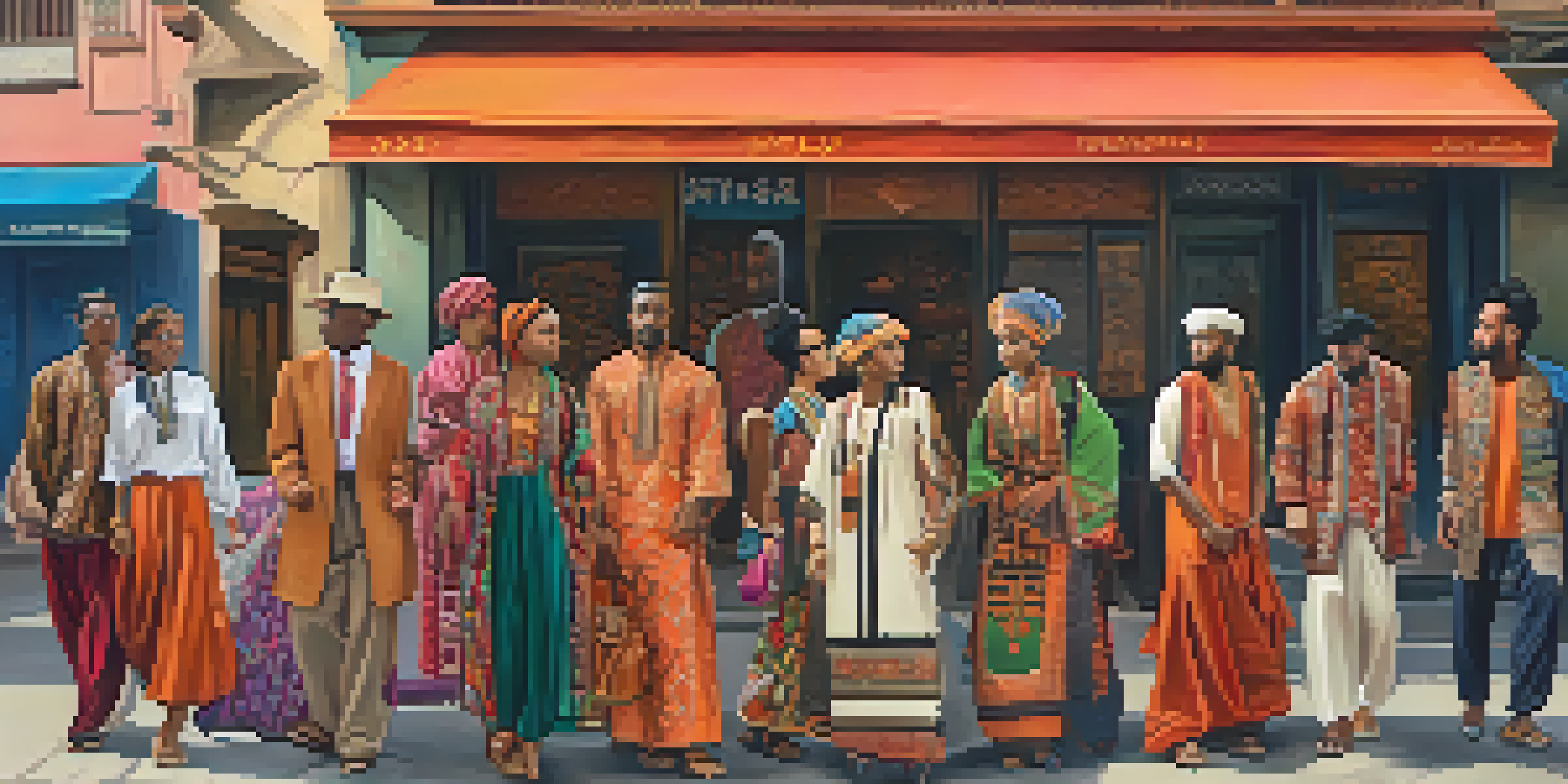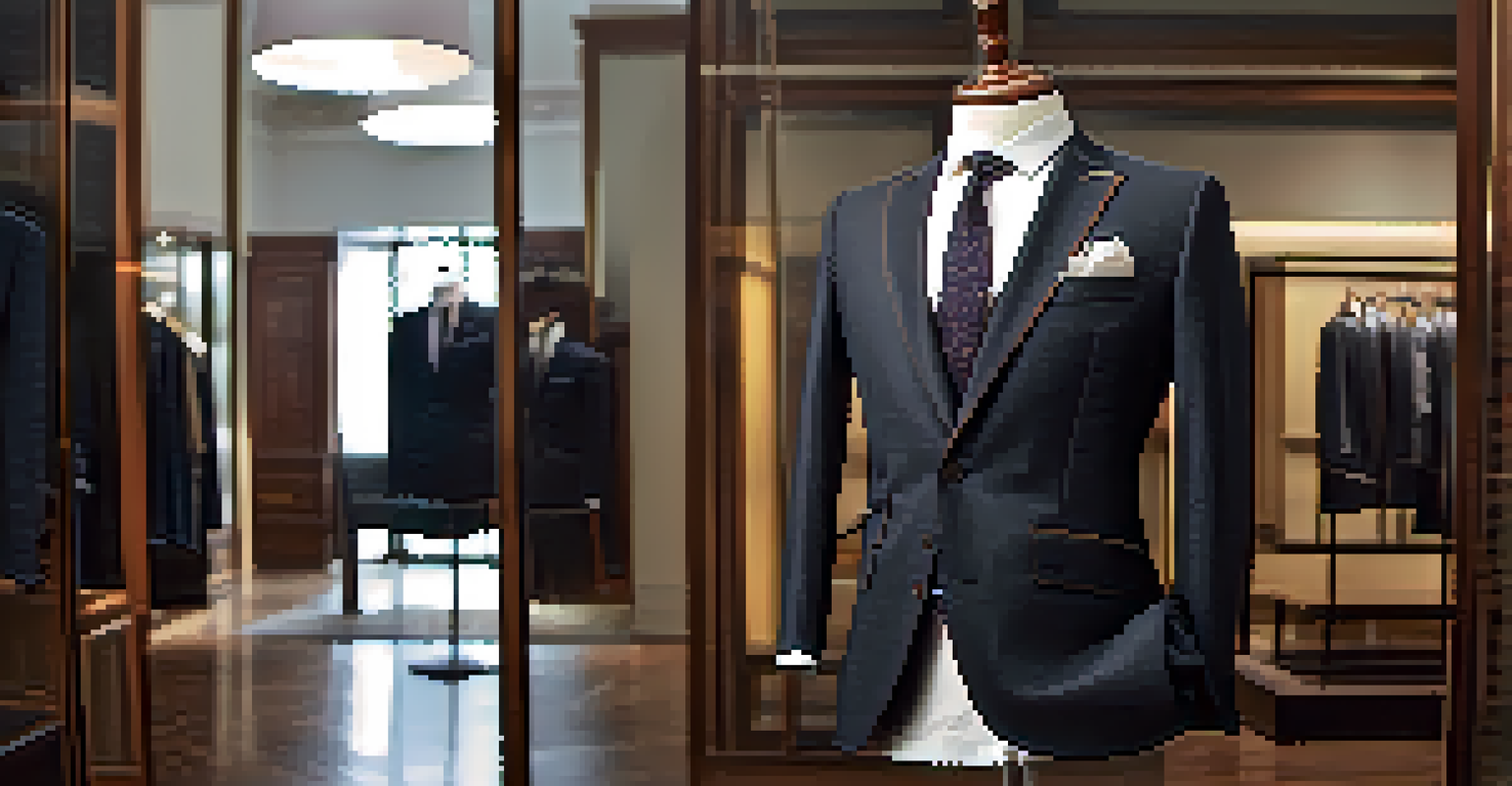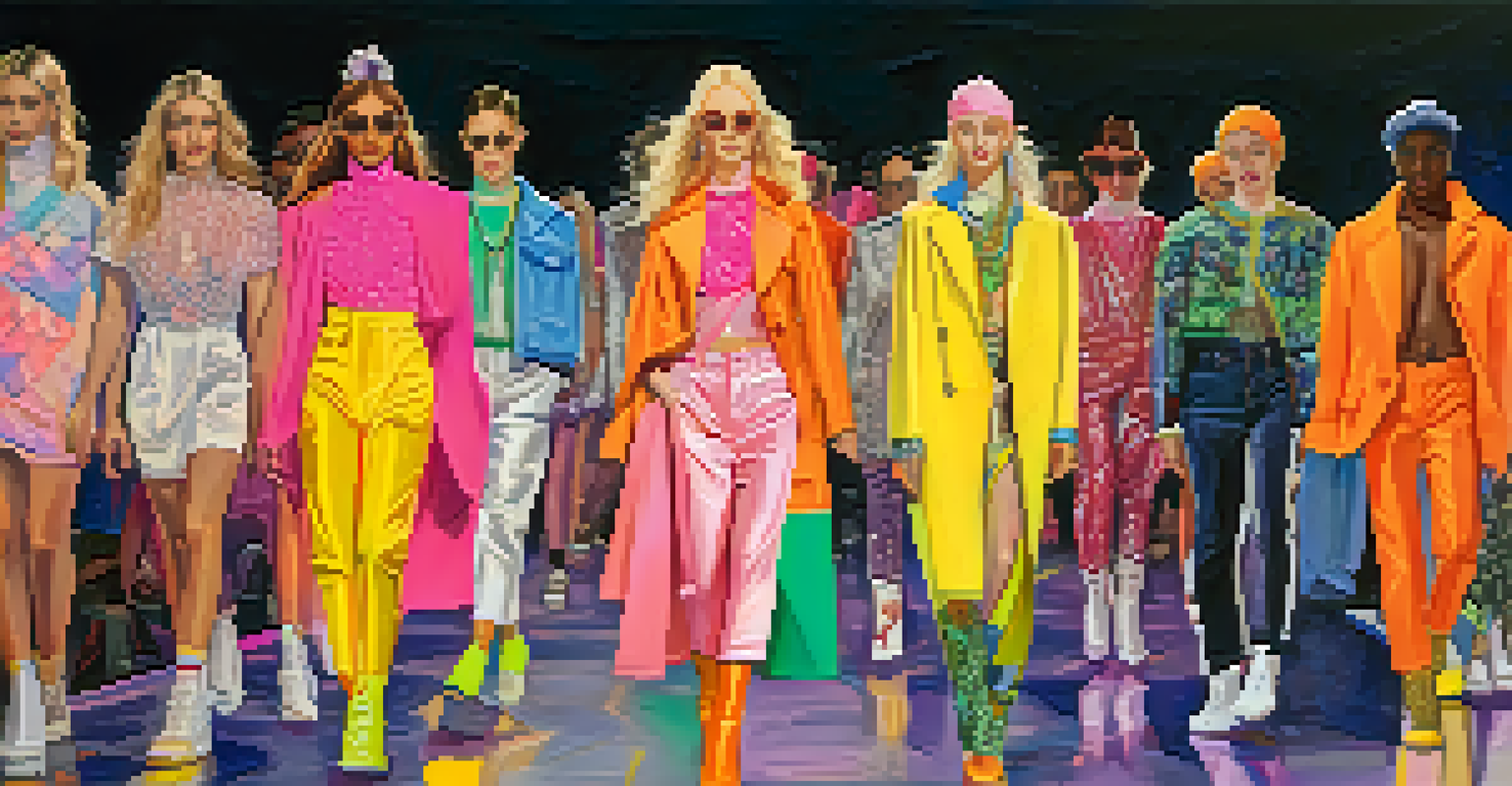Fashion and Identity: How Attire Shapes Our Social Perception

The Connection Between Fashion and Identity
Fashion is more than just clothing; it's a powerful form of self-expression. Our attire often serves as a canvas where we paint our identity, reflecting our personality, beliefs, and values. For instance, someone who dresses in vibrant colors might convey a lively and outgoing nature, while a person in muted tones may suggest a more reserved character.
Fashion is the armor to survive the reality of everyday life.
This connection between fashion and identity is evident in various cultures around the globe. Traditional garments, such as the kimono in Japan or the sari in India, not only represent cultural heritage but also enhance individual identity within that context. As we navigate our social circles, the clothes we wear can influence how we perceive ourselves and how we are perceived by others.
Moreover, the relationship between fashion and identity changes over time. Trends come and go, but the essence of using attire to showcase individuality remains constant. It's fascinating to see how generations adapt their clothing choices to reflect evolving social norms and personal identities.
Cultural Influences on Fashion Choices
Cultural backgrounds play a significant role in shaping our fashion choices. From the fabrics we prefer to the styles we adopt, our cultural identity often guides our decisions in the wardrobe. For example, someone from a Western culture may lean towards casual wear, while someone from a more traditional background might choose attire that reflects their heritage.

Additionally, the fashion industry has a powerful influence on what is deemed acceptable or trendy within different cultures. Globalization has introduced various styles across borders, yet there remains a strong desire to maintain cultural authenticity. This blend can create a unique fashion landscape where traditional and contemporary styles coexist.
Fashion as Self-Expression
Fashion serves as a powerful form of self-expression, reflecting our identities through personal style choices.
Understanding these cultural influences is crucial for appreciating the diversity in fashion. It allows us to recognize the stories behind the clothes and fosters respect for various cultural identities. Furthermore, it encourages us to celebrate our unique styles while being mindful of our cultural histories.
Fashion as a Tool for Social Status
Fashion has long been associated with social status, often acting as a marker of wealth and prestige. Certain brands and styles are perceived as symbols of success, leading individuals to curate their wardrobes to reflect their social standing. For instance, luxury brands like Chanel or Gucci can signify affluence, making their wearers feel part of an exclusive club.
Style is a way to say who you are without having to speak.
However, this association can create a paradox, where individuals may feel pressured to invest in high-end fashion to maintain their social image. This pressure can lead to financial strain or even a sense of inadequacy for those who cannot afford such luxuries. It’s a reminder that while fashion can elevate status, it can also foster anxiety around self-worth.
Moreover, the rise of sustainable and inclusive fashion is challenging traditional notions of social status. Many are now prioritizing ethical choices over brand names, suggesting that true style comes from authenticity rather than price tags. This shift encourages a more holistic view of fashion as a reflection of values, rather than mere social standing.
The Role of Fashion in Group Identity
Fashion often serves as a unifying force within groups, helping to forge a sense of belonging. Whether it’s a sports team wearing jerseys or a band’s fans donning specific attire, clothing can create an instant connection among individuals. This group identity fosters camaraderie and shared experiences, reinforcing social bonds.
Moreover, subcultures often develop their own distinct fashion styles, which serve as badges of identity. Think of punk rockers with their leather jackets and vibrant hair, or hip-hop enthusiasts sporting oversized clothing. These styles not only distinguish members of the subculture but also communicate their values and beliefs to the outside world.
Cultural Impact on Fashion
Cultural backgrounds significantly shape our fashion choices, influencing everything from styles to the fabrics we prefer.
However, while fashion can create a sense of belonging, it can also lead to exclusion. Individuals who don’t conform to the group’s style may feel alienated or pressured to change their appearance. It’s essential to strike a balance between celebrating group identity and respecting individual expression within that context.
Fashion in Professional Settings
The way we dress in professional environments can significantly impact our careers. Attire can influence perceptions of competence and authority, often leading to the phrase 'dress for success.' For example, wearing a well-tailored suit can evoke confidence and respect, while casual clothing may be seen as unprofessional in certain settings.
Moreover, different professions have their own dress codes, which can dictate how individuals express their identities at work. Creative industries may embrace bold and unconventional styles, while corporate environments often favor traditional attire. Adhering to these norms can be crucial for career advancement, yet it may also suppress personal expression.
There's a growing movement advocating for more relaxed dress codes, particularly in tech and creative sectors. Such changes allow individuals to express their identities more freely, promoting comfort and authenticity in the workplace. This evolution reflects a broader understanding of how fashion can coexist with professionalism.
Fashion and Gender Identity
Fashion plays a critical role in shaping gender identity, often reinforcing or challenging societal norms. Historically, clothing has been a key determinant of gender roles, dictating what is considered appropriate for men and women. For instance, women have long been expected to wear dresses, while men are often seen in suits.
However, the fashion landscape is evolving, with more individuals embracing gender-fluid and non-binary styles. Designers are increasingly creating collections that defy traditional gender norms, allowing people to express their identities authentically. This shift encourages a more inclusive view of fashion, where everyone can find styles that resonate with their true selves.
Fashion and Social Status
Fashion is often linked to social status, with certain brands symbolizing wealth, yet a shift towards sustainability is redefining value in style.
As society becomes more accepting of diverse gender identities, fashion continues to be a powerful vehicle for change. It challenges outdated stereotypes and fosters conversations about self-expression and individuality. Ultimately, fashion is an ever-evolving reflection of our understanding of gender and identity.
The Future of Fashion and Identity
Looking ahead, the relationship between fashion and identity is poised for further transformation. As society becomes increasingly aware of issues like sustainability and inclusivity, the fashion industry is being pressured to adapt. This evolution may lead to more transparent practices that prioritize ethical production and representation.
Technology is also set to play a significant role in shaping the future of fashion. Innovations like virtual fitting rooms and augmented reality are changing how we shop and express our identities through clothing. These advancements can enhance personalization, allowing individuals to curate wardrobes that truly reflect who they are.

Ultimately, the future of fashion will likely emphasize authenticity and individuality. As more people seek to express their unique identities, the industry will need to respond with diverse offerings that cater to various tastes and values. This shift holds great potential for fostering a more inclusive and expressive fashion landscape.